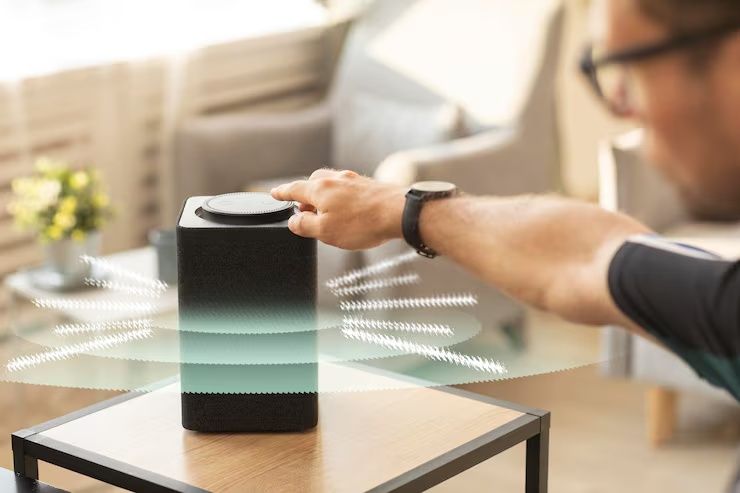Humidity sensors, also known as hygrometers, are instruments designed to measure and monitor the amount of moisture in the air or within materials. These sensors play a vital role in maintaining environmental balance, protecting sensitive equipment, and improving comfort in living or industrial spaces.
They are commonly used in sectors such as agriculture, manufacturing, healthcare, data centers, and weather monitoring systems. As climate conditions and energy efficiency become more critical topics, humidity sensors have evolved into essential components for both smart systems and sustainable environments.
The basic working principle involves detecting changes in electrical resistance or capacitance due to moisture levels. These readings help control air quality and maintain desired environmental conditions in enclosed or outdoor spaces.

Importance
Humidity sensors matter today because precise environmental monitoring directly affects human health, industrial performance, and product longevity. Maintaining correct humidity levels prevents corrosion, mold growth, static electricity, and product degradation.
Their significance can be understood through key applications:
-
Agriculture and Greenhouses: Regulate air moisture to improve crop yield and prevent plant diseases.
-
HVAC Systems: Ensure balanced air conditioning and energy-efficient climate control.
-
Pharmaceutical and Medical Environments: Protect sensitive compounds and equipment from moisture damage.
-
Electronics Manufacturing: Prevent static discharge and maintain safe humidity levels in cleanrooms.
-
Smart Homes: Enable thermostats and air purifiers to adjust automatically based on humidity readings.
For individuals and industries alike, accurate humidity measurement enhances quality, comfort, and sustainability.
Recent Updates
The year 2024–2025 has seen notable developments in humidity sensor technology and applications:
-
Integration with IoT Platforms: Modern humidity sensors now communicate real-time data to cloud-based systems for predictive maintenance.
-
Advances in MEMS (Micro-Electro-Mechanical Systems): Compact and energy-efficient sensors have improved precision for portable and smart devices.
-
Environmental Monitoring Growth: Global focus on climate resilience has increased sensor deployment in agriculture and air-quality networks.
-
Hybrid Sensing Technologies: Combined temperature-humidity modules have become standard in automotive and consumer electronics manufacturing.
-
Smart Building Automation: In 2025, demand for humidity sensors in smart cities and sustainable construction increased globally, driven by stricter indoor air-quality standards.
These developments underline the importance of environmental data in addressing challenges such as climate change, resource management, and public health.
Laws or Policies
Humidity sensor production and application are subject to quality and safety regulations in many countries. Governments recognize their role in air quality, health, and energy efficiency.
Some examples include:
-
United States: The Environmental Protection Agency (EPA) promotes indoor air-quality standards where humidity measurement helps prevent mold and pollutants.
-
European Union: The REACH and RoHS directives regulate the materials used in sensor manufacturing to ensure environmental safety.
-
Asia (Japan, South Korea, China): Regional standards emphasize humidity control for electronics production and workplace safety.
-
Building Codes: Modern green building certifications (like LEED and BREEAM) require proper humidity monitoring systems in HVAC designs.
These regulations ensure that sensors used in critical applications adhere to environmental, electrical, and performance standards.
Tools and Resources
Various tools and digital resources assist in studying, monitoring, and managing humidity data effectively.
Useful Tools and Platforms
-
Humidity Calculator (NOAA or NIST): Converts relative humidity, dew point, and temperature data.
-
IoT Monitoring Platforms: Tools such as ThingSpeak, AWS IoT Core, and Azure IoT Hub allow real-time tracking.
-
Data Logging Software: Open-source platforms like Grafana or InfluxDB help visualize humidity trends.
-
Sensor Selection Guides: Manufacturers and research institutions publish specifications comparing humidity sensor accuracy, response time, and calibration methods.
-
Mobile Apps: Apps like SensorPush and Govee Home display live humidity readings from wireless sensors.
Example Table: Common Types of Humidity Sensors
| Type of Sensor | Working Principle | Key Applications |
|---|---|---|
| Capacitive Sensor | Detects moisture through capacitance change | HVAC systems, agriculture, and smart homes |
| Resistive Sensor | Measures change in electrical resistance | Industrial process monitoring |
| Thermal Conductivity | Compares heat transfer of dry and humid air | Harsh or high-temperature environments |
| Optical Sensor | Uses infrared or laser light to measure water vapor | Meteorology and environmental research |
This comparison shows how each sensor type fits a specific requirement depending on accuracy, response time, and environmental conditions.
FAQs
What is a humidity sensor?
A humidity sensor is an electronic device that measures the amount of moisture present in the air or environment, helping regulate and monitor climate conditions.
Where are humidity sensors commonly used?
They are found in industries such as agriculture, manufacturing, pharmaceuticals, automotive systems, and smart home devices.
How do humidity sensors work?
They detect changes in electrical properties like resistance or capacitance that occur when moisture interacts with sensor materials.
What are the main types of humidity sensors?
The most common types include capacitive, resistive, and thermal conductivity sensors. Each type serves different environmental and industrial needs.
Why is humidity monitoring important?
Accurate humidity measurement ensures equipment reliability, energy efficiency, and comfortable living conditions while reducing health risks related to mold or poor air quality.
Conclusion
Humidity sensors represent a crucial part of today’s technological and environmental landscape. Their ability to monitor and control atmospheric moisture makes them essential for agriculture, health, electronics, and climate regulation.
The continuous evolution of humidity-sensing technology—driven by miniaturization, data connectivity, and sustainability—highlights its growing influence across sectors. Modern systems now integrate these sensors into IoT frameworks, allowing for precise environmental tracking and predictive maintenance.
As industries and communities become more aware of air quality and climate management, humidity sensors will remain at the forefront of innovation. They bridge the gap between environmental science and technology, supporting healthier, more efficient, and sustainable environments for the future.